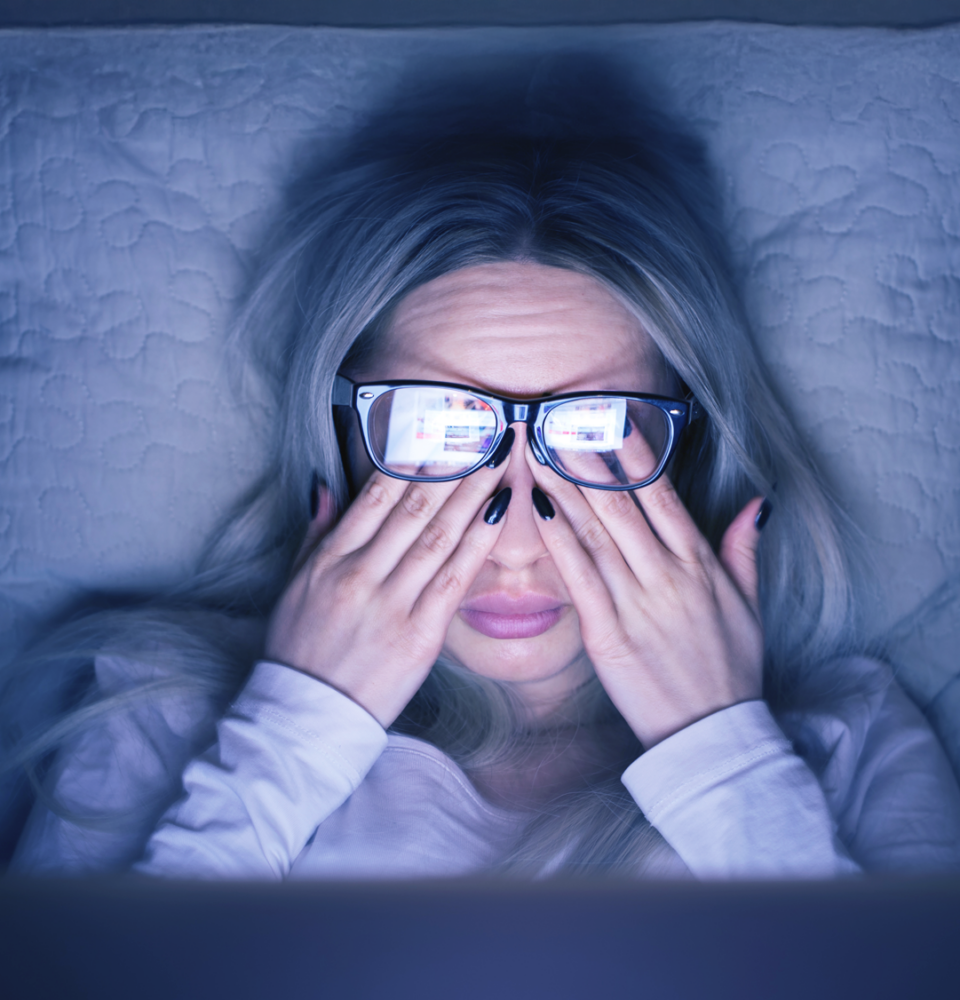At Squint, we talk about circadian rhythm. A LOT.
It’s what matters most to optimal health. Learning the Squintessentials means understanding the drivers of good circadian rhythm: increased daytime natural sunlight and reduced artificial light at night.
Getting our light right is what keeps us in rhythm.
In our modern world, light days and dark nights no longer exist. In fact, we live in a world of perpetual artificial light, day and night. From early morning scrolling to endless zoom calls to one more episode, we seem to be spending more and more time living under the bright man-made lights that make up our modern world.
Is there any place to hide?
Let’s take a Squint.
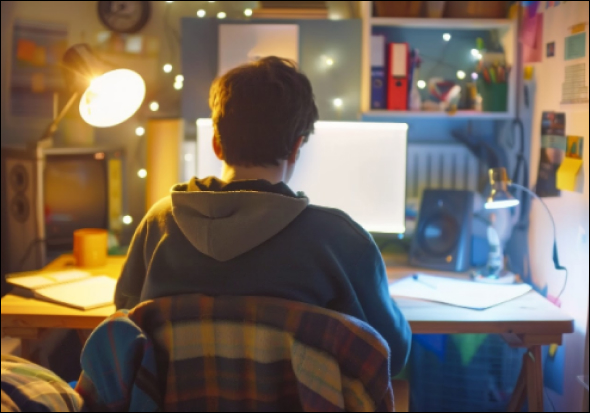
Our Digital Age
During the day, we are meant to be exposed to bright light – the bright blue light that comes from the big yellow sun! This keeps us awake and alert, naturally. As natural light dims at the end of the day, our body takes its cue to release melatonin, a hormone that promotes sleep, protects our cells and powers cellular repair.
In today’s digital age, our sun cues are missing. In fact, our daylight signals are mostly from screens. Whether it’s working on a computer, scrolling through social media on a smartphone, or binge-watching your favorite shows on a tablet, we love our screens, all day and all night. But research is showing that our screens do not love us. Not even a little bit. In fact, mental health issues are skyrocketing right alongside our increased screen time. Every health issue you can imagine: obesity, diabetes, Alzheimer’s, dementia, cancer – all exploding with our new modern and tech-inspired lifestyle. Our decisions around light are not only disrupting our circadian rhythms but are taking a huge toll on our mortality.
Blue Gone Rogue
The fact is, blue light exposure from screens is never a good idea, day or night. Blue light is a high-frequency visible light. Nature (the sun) balances this high-frequency with other wavelengths (like red) which means no one wavelength ever gets out of hand. Nature does the same thing with UV light by the way (it is always accompanied by other wavelengths and is great for you in nature’s perfect cocktail of combined wavelengths). Unfortunately, our technology that we can’t live without, is high-frequency blue, with no balance, no buffer, no natural design of the sun to mitigate its power. Excessive exposure to artificial blue light from screens (Iphone, Ipad), especially at night, looks nothing like nature’s blue light.
This blue screen-light is a blue gone rogue, and it interferes with metabolism, melatonin production, gut health, sleep, and pretty much everything else “bad” you can think of.
So, is this when I cancel my Netflix subscription?
Not necessarily…but your binging needs some serious blocking.
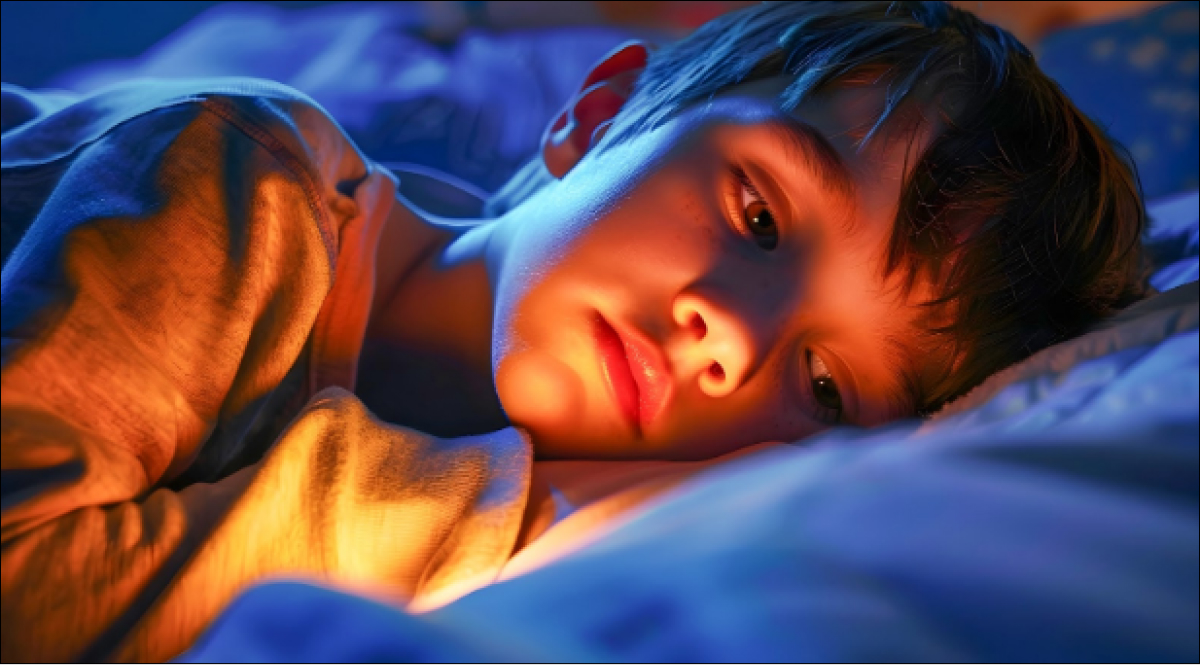
Blocking Blue Light
Remember, our bodies love blue light in nature when it is accompanied by the other wavelengths of light from full-spectrum sun. If you get outside in the morning, that’s the good time-keeping blue light of nature. It’s our blue light wake-call at sunrise and our blue light good night kiss at sunset.
What about the Netflix blue we watch after sunset? That’s the solo blue wavelength you are watching on your phone or on your tablet with no wingman of red or any other other colors of nature. It’s the inside blue. It’s rogue and it’s basically the worst, most evil character that any good streaming show could create. It’s the blue that makes you blue. It’s dangerous to your mental and physical health. Exposure to even a small amount of artificial blue light after the sunset disrupts fat metabolism, increases blood pressure, destroys melatonin and delays the onset of sleep (further disrupting your circadian rhythm).
It’s why at Squint, we say skip the next episode and go to bed.
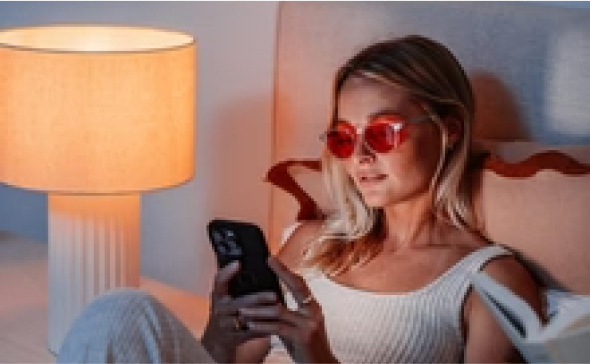
Blue Blocking Glasses
Can’t turn everything off at sunset? That’s when blue blockers are non-negotiable. When the sun goes down you need to up your blue-blocking game. One of the simplest ways to block blue light is by wearing blue-light blocking glasses. These glasses are designed with special coatings that filter out blue light while allowing other beneficial light to pass through. If you are now pulling up your Amazon app to find a set of daytime and nighttime blue blockers, good idea but BUYER BEWARE. Blue blockers are not created equal. You may think you can get away with the cute clear ones (you know the sexy librarian Warby Parker frames), but the fact is, they don’t block the blue you need to avoid (regardless of what the marketing says). We are blue light nerds and test these things – we’ve taken a Squint, a closer look and now we can help you. We have tried an embarrassing amount of blue blockers (you’re welcome) so here are some of our favorites. These frames may not be front and center at the parties at Paris Fashion Week (although they should be!) However, the success of your circadian rhythm in your modern life means you need to own a pair.
VivaRays Blue Blockers. These glasses have been tested, and retested in laboratory settings to ensure they are blocking the most amount of artificial blue light as possible. They offer daytime, evening and nighttime versions of their glasses, effectively blocking 100% of the harmful wavelengths of artificial light. Pretty stylish actually.
Ra Optics. They have an amazing inventory of true blue-blocking glasses, including many kids glasses. As we always say at Squint, teach your children early what you learned late! (not to mention the research associated with blue light exposure and childhood obesity…it’s off the charts folks)
Lucia Eyes. Great selection of adult and kids glasses.
Blue Blocking Screen Protection
So you’ve blocked your eyes. Great job Squinters! Now it’s time to adjust your screens. Adjusting the settings on your tech devices can help minimize your exposure to artificial blue light. It is essential to make sure you adjust your phone settings after sunset. For your IPhone: Settings → Accessibility → Display and Text Size —> Color Filters —> Turn the red up! This can help your circadian rhythm. Activate the Night Shift feature on iOS devices or the Night Light feature on Windows and Android devices. These settings change the display to warmer tones, reducing blue light emission. It’s the red wing-man the blue light needs to be less lethal.
If you are a true Squinter, take your blue blocking game to the next level with computer software that adjusts your screens for you. We love Iris Tech Software. Here’s a video on how to use it. You can download Iris on your laptop or computer and it will adjust the color temperature of your screen based on the time of day, automatically transitioning to warmer tones in the evening.
Dimming Indoor Lighting
Now that you think you have done all that you can to block the artificial blue light emitting from your devices, we need to address the elephant in the room. Modern lighting. Yes, modern lighting is as toxic as modern food. Typical LED lights are especially bad because they produce more blue light than the traditional incandescents many of us grew up with. LEDs may last longer than incandescents, but the lingering negative health impact may not be worth whatever efficiency we are saving. In fact, our modern LED lights now emit shorter wavelengths which suppress melatonin more than ever before. They are very convenient for modern life but extremely inconvenient for our circadian rhythm. Most homes now use LED lights in all light fixtures. And they all produce more blue light. Much more.
And that further disrupts our circadian rhythm.
So what do we do? Everything we can to mitigate our light environment to protect our circadian rhythm. Many companies understand this fundamental health issue and are starting to come up with lightbulbs to help. They can be difficult to find, but we love the ones from Health Lighting.
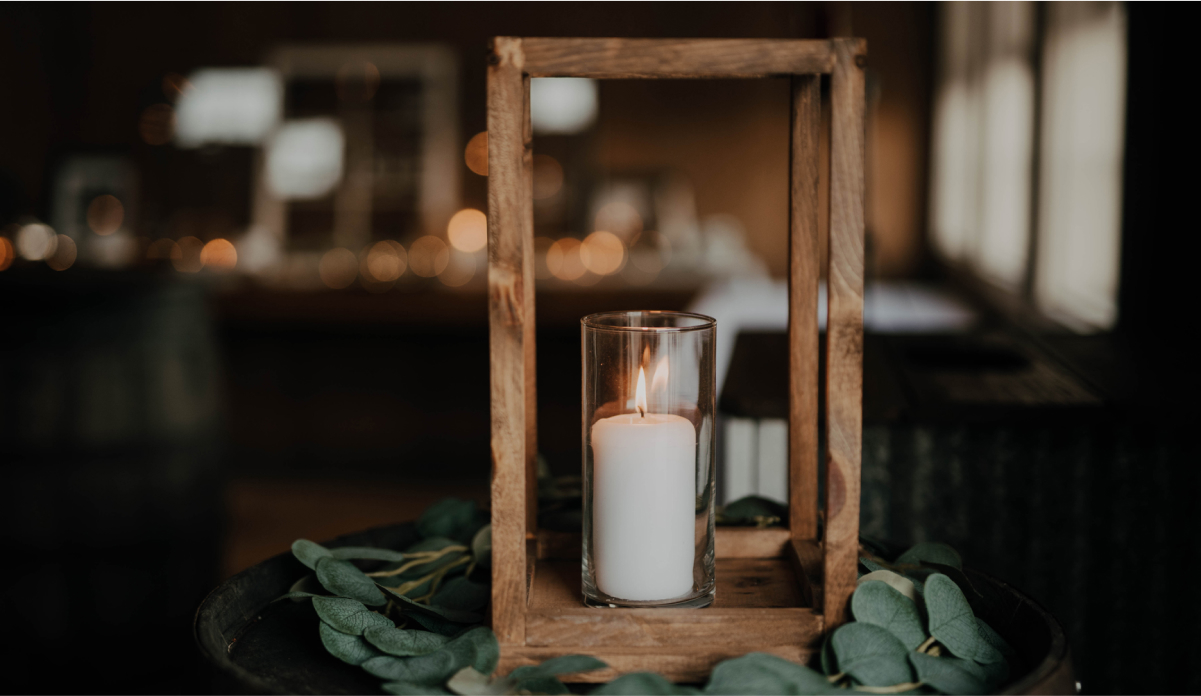
Blocking and Tackling
Yes, we like a good sports reference at Squint. And, battling modern blue light requires a decent amount of blocking and tackling (that’s a football reference, by the way). We could even say that blocking blue light is one of the greatest ways to tackle your health problems! Touchdown!
Limiting blue light exposure from screens at night is crucial for maintaining health and improving sleep quality. Of course, focusing on the Squintessentials like morning sun and grounding is all part of the daily game plan. By incorporating blue blocking glasses, adjusting screen settings, and creating a healthier indoor lighting environment, you can take an important step in minimizing the adverse effects of blue light and enjoying the beneficial impact to your health. As we continue to rely on screens in our daily lives, taking proactive steps to protect our eyes is more important than ever.
Thank you for taking a Squint with us!


